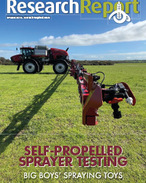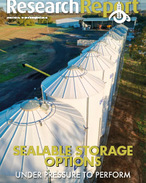This article is 8 years old. Images might not display.
The drop, when compared to the same time last year, is due to low and changing winter rainfall in key cropping regions.
Minister for Agriculture and Water Resources, Barnaby Joyce, said the latest forecast demonstrated the impact variable weather conditions is having on Australia’s cropping regions.
“Australia is a big country with a variable climate and highly fluctuating rainfall, so it is unrealistic to expect that all of our crops will be growing well at all times,” Minister Joyce said.
As a result of mixed seasonal conditions, ABARES predicts Australian farmers will produce 36.3 million tonnes of grains, oilseeds and pulses this year – 23 million tonnes less than the previous year.
“What we have to remember though is this forecast dip is coming off the back of Australia’s biggest winter crop on record last season at over 59.3 million tonnes, and yields are forecast to remain above the 10-year average to 2015-16,” Minister Joyce said.
“I know some areas are doing it incredibly tough, but our farmers continue to be resilient and demonstrate the strength of the farm business environment in Australia and continue to take advantage of strong Coalition Government investment in agriculture,” he said.
“Although yields are down, crop prices remain positive. In the ABARES 2017-18 June forecast for world crop prices, wheat prices are forecast to rise by five per cent to $US205/t, barley to rise by four per cent to US$165/t, and cotton to rise slightly to US 83c/lb.
“I am confident that despite challenges, the continued hard work of Australia’s farmers will drive a bright future for our cropping and agricultural industries.”
The Deputy Prime Minister said farmers impacted by tough or trying times will continue to have the full support of the government through our suite of measures under the $4 billion Agricultural Competitiveness White Paper, such as the Farm Household Allowance, $250 million for drought loans and the doubling of the Farm Management Deposits cap to $800,000.
Australia produces between 25 and 60 million tonnes of grains, oilseeds and pulses each year, and exports about two-thirds earning over $10 billion in export income.























